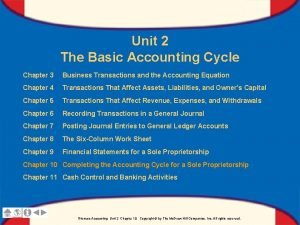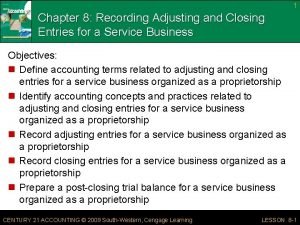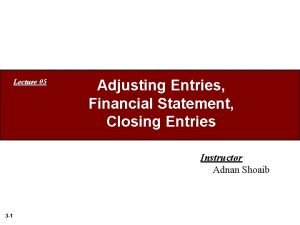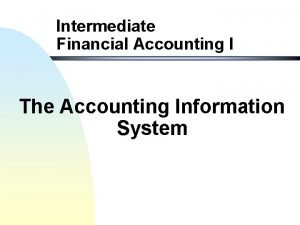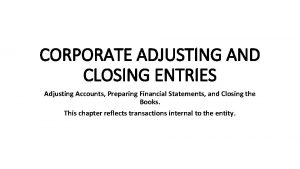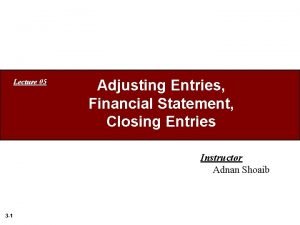PREPARING CLOSING ENTRIES Chapter 10 Lecture Notes CONGRATULATIONS








- Slides: 8

PREPARING CLOSING ENTRIES Chapter 10 Lecture Notes

CONGRATULATIONS! • Guess what? • You have done an amazing thing … • You have made it to the end of an accounting cycle! • WHOOOOOOO! • Now what?

IT’S CLOSING TIME! • Time to get the books ready for the new year. • Did the business make money or lose money? • Who gets that money? • How do we prepare the business for the next accounting period? • That’s what Chapter 10 is all about! With a bit of hard work and my expert tutelage, you’ll be fine!

What are Closing Entries? • Well first, let’s review: – Permanent accounts are used to accumulate information from one fiscal period to the next! (Also known as real accounts. ) – Permanent accounts are your assets, liabilities, and owner’s equity accounts. – Temporary accounts are used to accumulate information until it is transferred to the owner’s capital account. – Temporary accounts are also known as nominal accounts. – Temporary accounts are your revenue, expenses, drawing, and income summary accounts. • Temporary accounts must be reduced to ZERO at the end of each fiscal period!

So what are closing entries then? • Well, closing entries are the special journal entries used to prepare the temporary accounts for the new fiscal period. • To close a temporary account, an amount equal to its balance is recorded on the opposite side of its balance. • For example, if Sales Revenue has a Credit Balance of $4, 000, we would give Sales Revenue a Debit for $4, 000 to close it!

But can you do that? • You can’t make a journal entry with just a debit or a credit. You need both! • Whenever a temporary account is closed, the closing entry must have equal debits and credits! • INCOME SUMMARY is the temporary account that is used to summarize the closing entries for the revenue and expense accounts.

INCOME SUMMARY! • The Income Summary account is awesome. It sits there all alone, all year… waiting for its one chance at glory. • Closing day is it! • The Income Summary account is unique because it does not have a normal balance. • CREDIT BALANCE = NET INCOME! • DEBIT BALANCE = NET LOSS!

THERE ARE FOUR CLOSING ENTRIES! 1. Entry to Close Revenue 2. Entry to Close Expenses 3. Entry to Close Net Income or Net Loss into Capital. This will also close down Income Summary! (It’s job is done! ) 4. Lastly, the entry to close the Drawing Account into Capital. • • After recording these entries, you post them back to the ledger and watch the magic happen! Whoever invented this is a genius, man!

